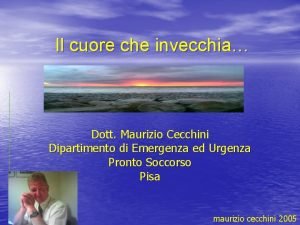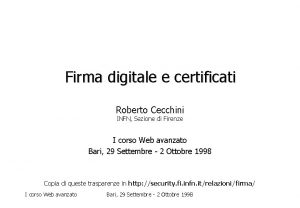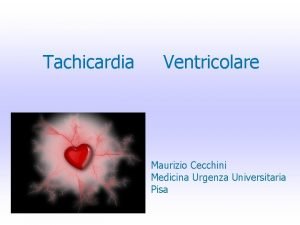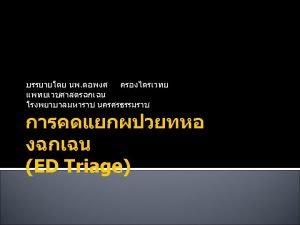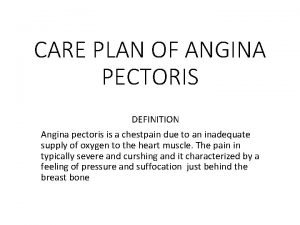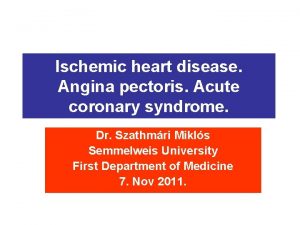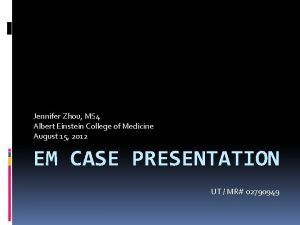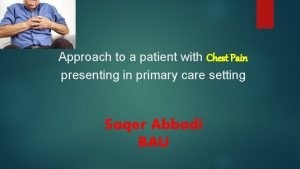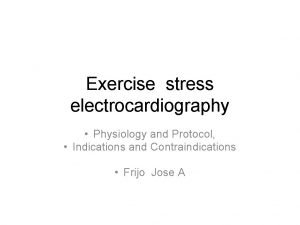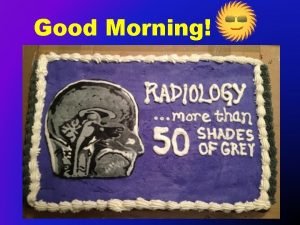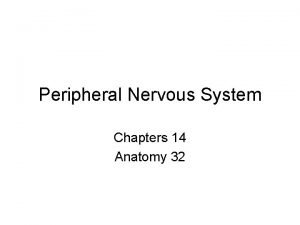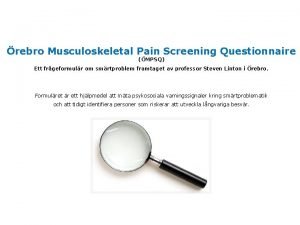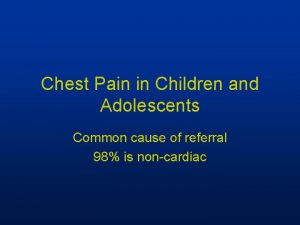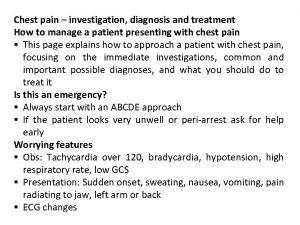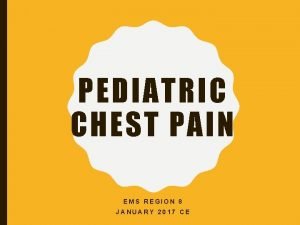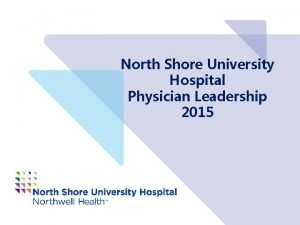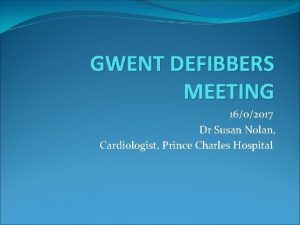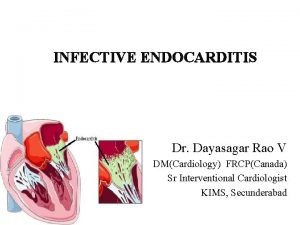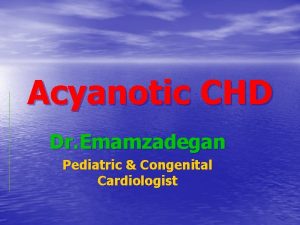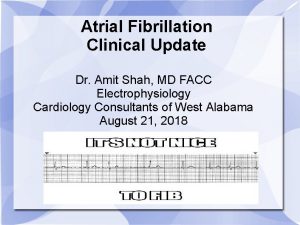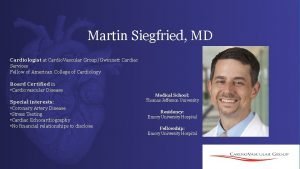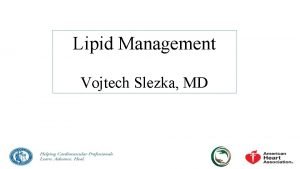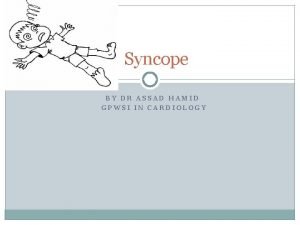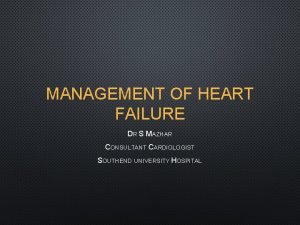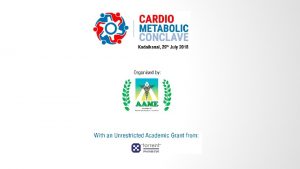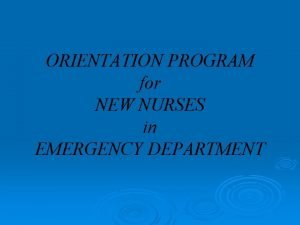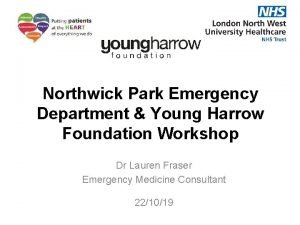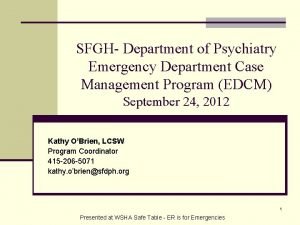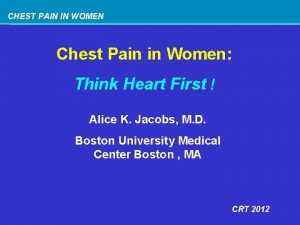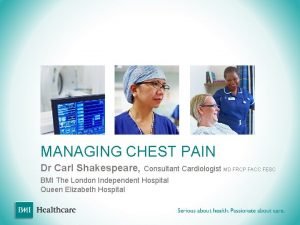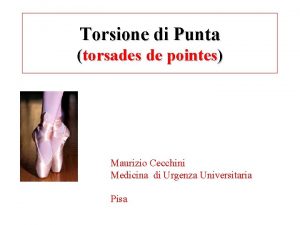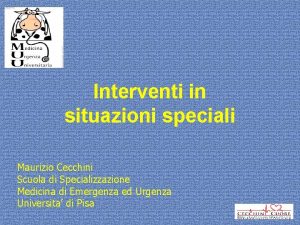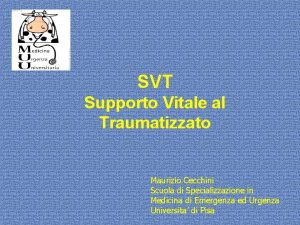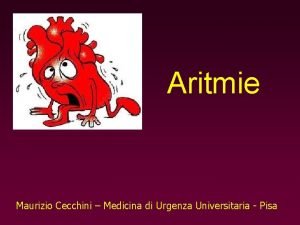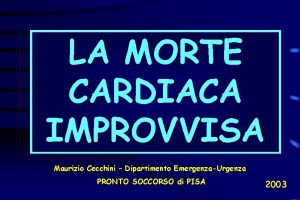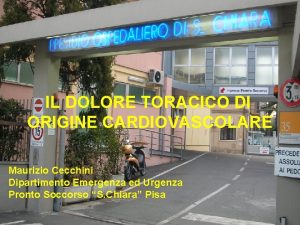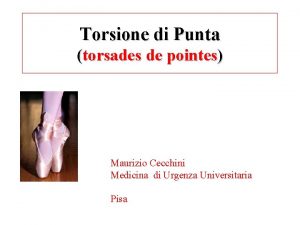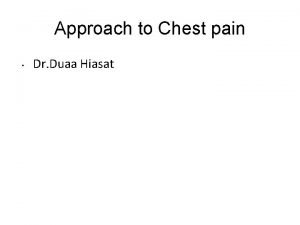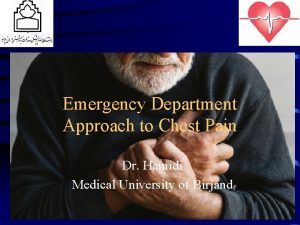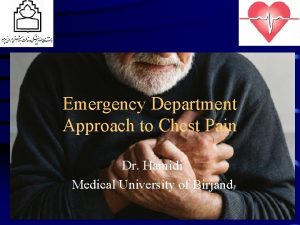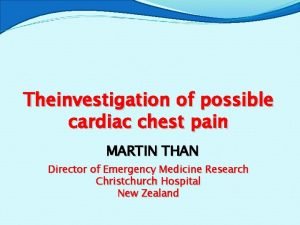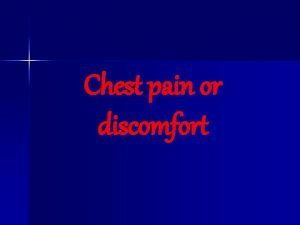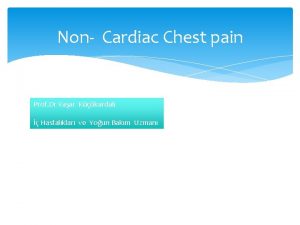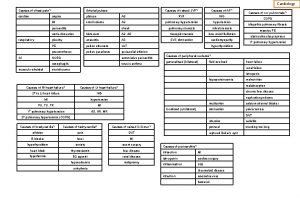Cardiac Chest Pain Maurizio Cecchini Cardiologist Emergency Department

































- Slides: 33

Cardiac Chest Pain Maurizio Cecchini - Cardiologist Emergency Department Pronto Soccorso “S. Chiara” Pisa

Who is he? • 1980 -1982 fellow at the Institute • • • of Cardiology - University of Pisa 1982 graduated in Medicine and Surgery - U. of Pisa 1985 specialized in Cardiovascular Medicine - U. of Pisa 1985 -1989 Head of the Mobile Coronary Care Unit -Pisa 1989 -2001 underchief and then Chief of the Coronary Care Unit of the University Cardiology Department 2001 -2005 Emergency Doctor at the Emergency Department “Pronto Soccorso” of Pisa

Coronary Care Units in Pisa • Hospital Cardiology Unit • University Cardiology Unit • C. N. R. Cardiology Unit 8 beds • Coronary angiography + PTCA 24 h24 • Heart Surgery team available 24 h24

Rescue PTCA Average time in Pisa • Acute AMI are recovered immediately in CCU. • Rescue PTCA in 30 -40 min. time (even if not in the main Hospital ) (Deaths during assisted transport = 0%)


Emergency Care Unit Pronto Soccorso Pisa Fast Effective Available Experienced Updtated maurizio cecchini 2005


Cardiovascular diseases causing chest pain - Angina and mycordial infarction - Aortic dissection - Pulmonary embolism - Acute pericarditis maurizio cecchini 2005

Chest pain in angina and myocardial infarction

Where do you feel pain ?

Which kind of pain is it? - pressure - constriction - burning - “disconfort” - “bad digestion” maurizio cecchini 2005

Which was the onset of pain ? It starts slowly, increasing its intensity, then slowly fades away. It lasts about 20 -30 minutes. In AMI can last even few hours. maurizio cecchini 2005

What were you doing when it started? Effort Cold Sexual activity Emotional stress At rest Sleeping maurizio cecchini 2005

What happened when you used the nitroglycerin pill ? The pain faded away in 3 -5 min (but even in hiatus hernia…) No improvement or transient improvement in AMI maurizio cecchini 2005

Related symptoms in cardiac chest pain Short heavy breath weakness Cold sweating “funny heart beat” fainting Vomiting (Sudden death) maurizio cecchini 2005

Exams performed at the “triage” • ECG + monitoring • Blood samples • • (troponin, CPK-m. B, myoglobin, SGOT) Emogasanalysis Chest X-Ray Monitoring BP ECHO maurizio cecchini 2005

Sequence… ECHO ECG ECHO chest pain maurizio cecchini 2005

…although the ECG… …can be abnormal in a chronic heart disease… A patient with heart problems should always have the last ECG in his wallet. maurizio cecchini 2005

. . watch out…! A normal ECG does NOT exclude a severe heart problem Always think : - Acute aortic dissection - Pulmonary Embolism maurizio cecchini 2005

PULMONARY EMBOLISM In most cases the pain is difficult to explain…. Generical chest disconfort. . Like a blade. . Like a weight. . Like a belt…a knot maurizio cecchini 2005

In massive pulmonary embolism EGA: low oxigen, low CO 2, alcalosis ECG: S 1…Q 3 maurizio cecchini 2005

Although in the pulmonary embolism. . very often the thrombosis is NOT Massive. . …most of survived cases show multiple little embolisms… maurizio cecchini 2005

ell Blood gases analysis Anxiety : p. O 2 , p. Co 2 Pulmonary Embolism : p. O 2 , p. C 02 maurizio cecchini 2005

Aortic dissection The pain is severe, can migrate from the front down on the back. Neurological symptoms may occur if the dissection includes the origin of the carotid arteries as well as an AMI can be present if the coronary arteries are involved in the dissection. Diagnosis can be DIFFICULT, if you do not think about it…. maurizio cecchini 2005

AORTIC DISSECTION. . Femoral and radial artery pulses can be different. . . The pain “comes and goes” , often in the back chest…. Aortic incompetence murmur can be present maurizio cecchini 2005

Pericarditis …the pain depends on the position. . . fever …young patients …”leather rubbing” noises maurizio cecchini 2005

When the clinical exam and the clinical history of the patient do not match with the instrumental findings , ALWAYS THINK that maybe these could be inadequate in THAT patient, in THAT moment. . maurizio cecchini 2005

Heart attack…what to do ? • Calm down the patient, sedatives are …welcome • Alert the 118 immediately , explaining what is happening, where exactly you are Don’t put the phone down , leave your mobile number to the 118 operator


Waiting for the ambulance • • • Put the patient in a comfortable position Supply oxigen if possible Talk to the patient , making him sure that Italians Emergency Doctors are great…!! (you can say it loud…) Be ready to start a CPR, find someone around ready to help you… THINK FORWARD


Having plenty of instrumental exams available can force us to reduce the time of hearing the patient, to let him tell us how he really feels, the reason why he came to be visited, therefore, TO FAIL a correct diagnosis and therapy maurizio cecchini 2005

…thanks for your attention ! maurizio cecchini 2005
 Dr maurizio cecchini
Dr maurizio cecchini Dan cecchini
Dan cecchini Roberto cecchini
Roberto cecchini Cecchini pisa
Cecchini pisa Chest pain triage
Chest pain triage Stable angina nursing diagnosis
Stable angina nursing diagnosis Typical vs atypical chest pain
Typical vs atypical chest pain Petmac chest pain
Petmac chest pain Causes chest pain
Causes chest pain Typical chest pain
Typical chest pain Dmagid
Dmagid What is referred pain
What is referred pain ömpsq
ömpsq Chest pain in pediatrics
Chest pain in pediatrics Retrosternal chest pain
Retrosternal chest pain Chest pain in pediatrics
Chest pain in pediatrics Period vs pregnancy
Period vs pregnancy Pms vs pregnancy
Pms vs pregnancy Mad pain
Mad pain Joanne gottridge md
Joanne gottridge md Pseudofusion beat
Pseudofusion beat Dr susan nolan
Dr susan nolan Dr dayasagar cardiologist kims
Dr dayasagar cardiologist kims Endocardial cushion defects
Endocardial cushion defects Dr amit shah cardiologist
Dr amit shah cardiologist Dr siegfried cardiologist
Dr siegfried cardiologist Dr slezka cardiologist
Dr slezka cardiologist Dr nick gall cardiologist
Dr nick gall cardiologist Dr mazhar cardiologist
Dr mazhar cardiologist Cardiologist in kodaikanal
Cardiologist in kodaikanal Emergency nursing orientation
Emergency nursing orientation Urgent treatment centre whittington
Urgent treatment centre whittington Emergency care harrow
Emergency care harrow Sfgh emergency department
Sfgh emergency department
